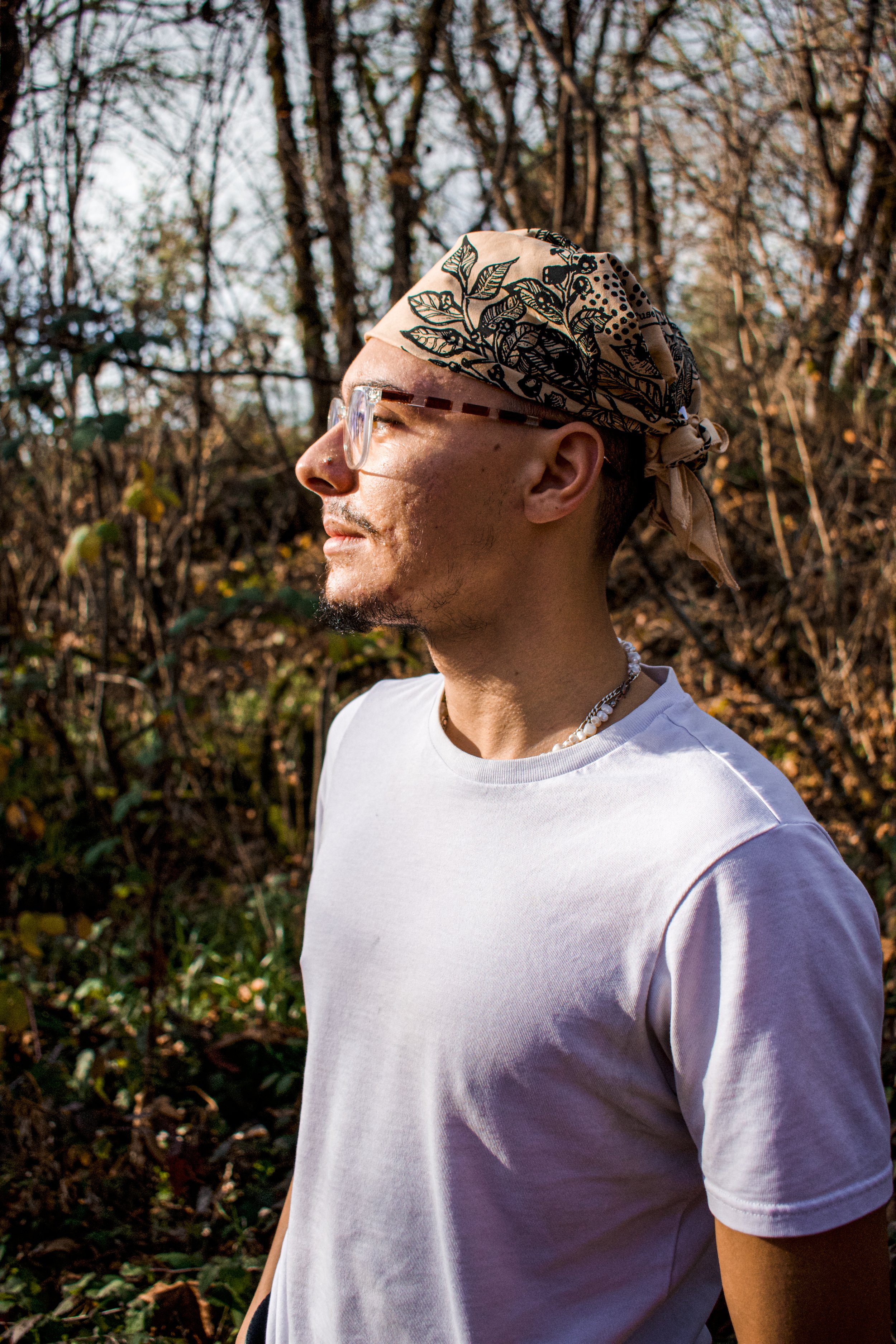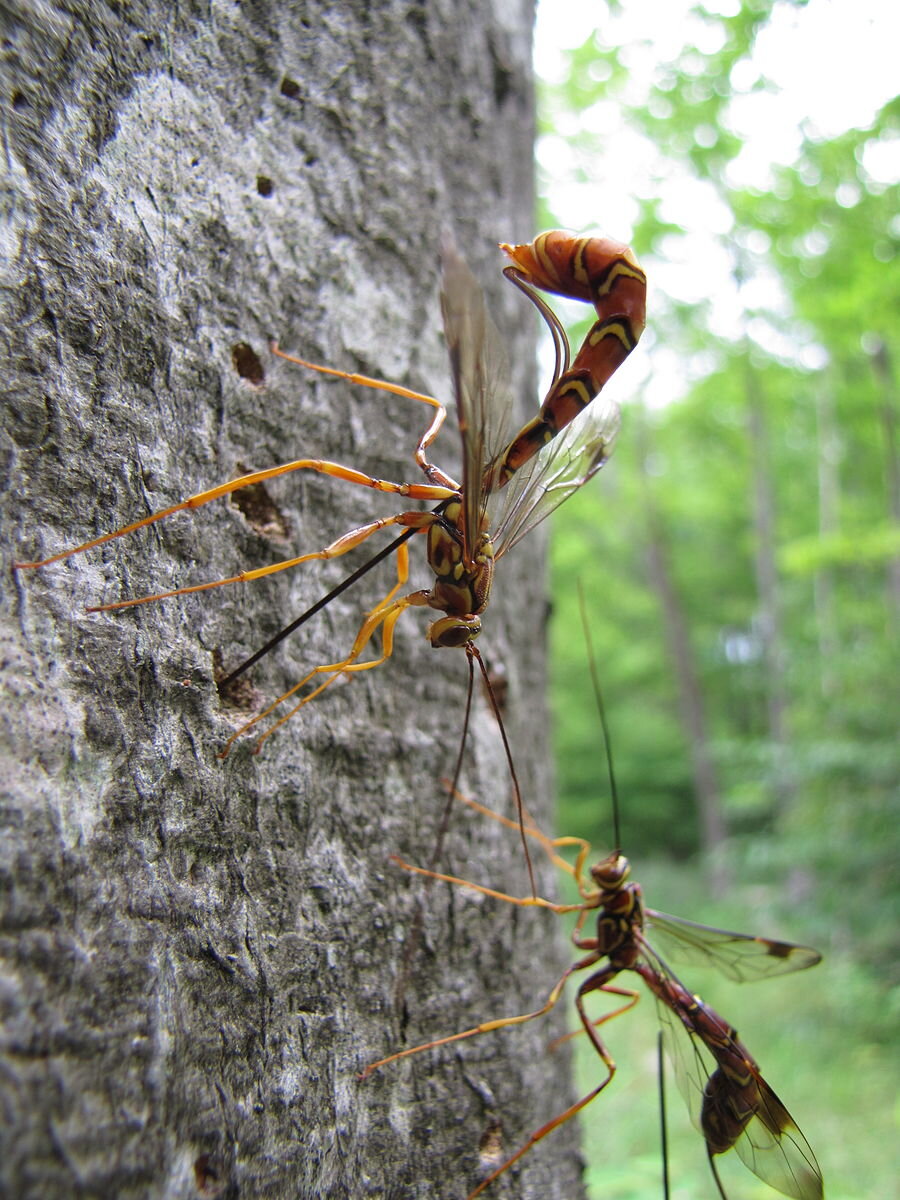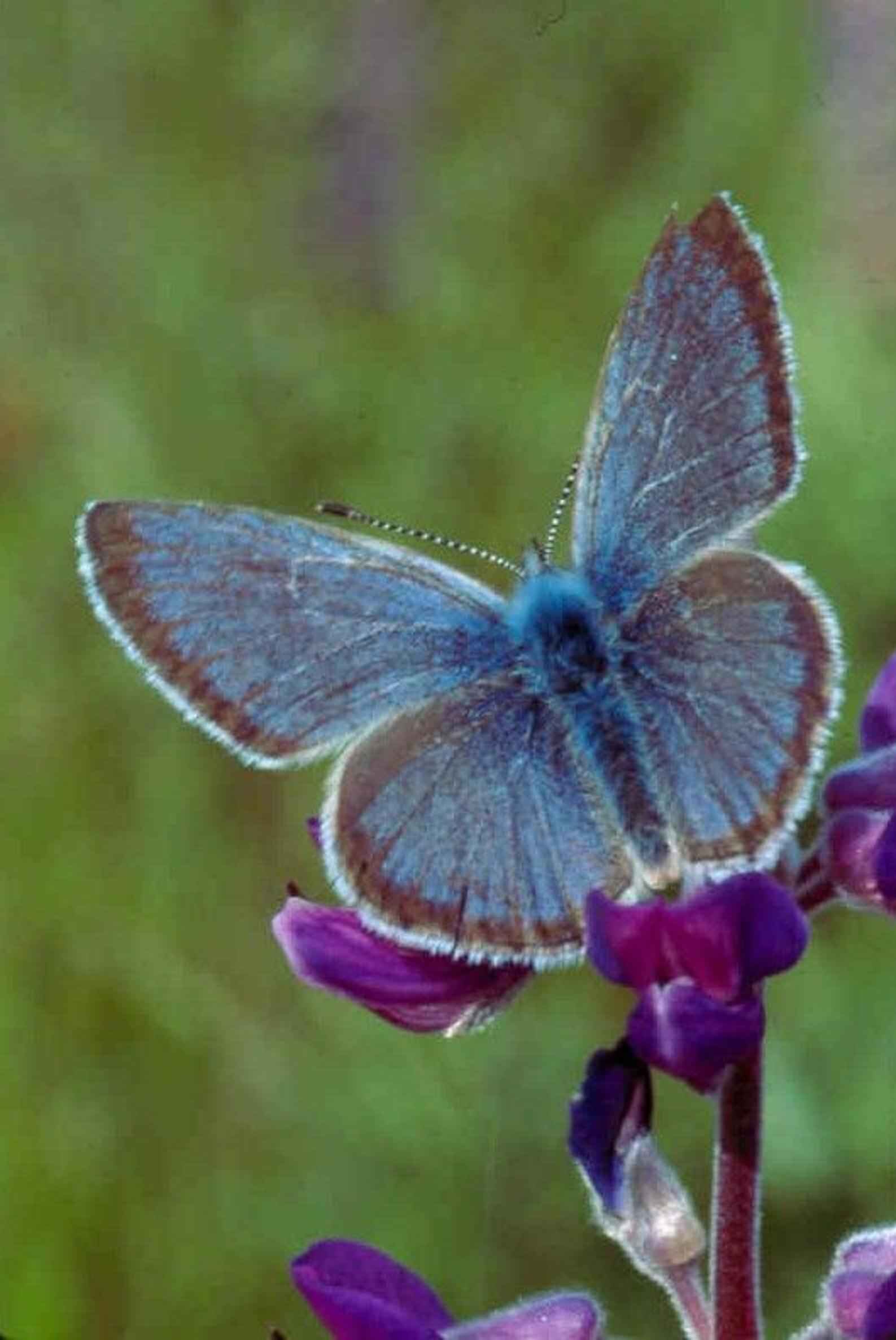Featured Flora and Fauna on the Fire Ecology Bandana
California black oak, Quercus kelloggii
On one corner of the bandana, we have the California Black Oak, native to Oregon and California. California Black oak, as well as most species in the oak family, depend on fire and disturbance to be able to sprout new shoots from their existing root systems. Acorns also germinate at a much higher rate after a low intensity burn. Native peoples carefully applied fire to oak groves to maintain the health of the trees and the bountiful acorns they harvested.
Stump stabber, Megarhyssa macrurus
The Stump Stabber, in the Megarhyssa wasp family, is another crucial insect for forest regeneration after a fire. Similar to the black fire chaser beetle, they deposit their eggs into fire compromised trees and logs using an intimidatingly long ovipositor. While scary looking, they are actually harmless to humans.
Fender’s blue butterfly, Icaricia icarioides fenderi
The Fender's Blue Butterfly is an endangered species of butterfly that is endemic to the Willamette valley. Their main source of food comes from the nectar in the Kincaid lupine, as well as camas and other native flowering prairie plants.
Ponderosa pine, Pinus ponderosa
It is incredible to see a ponderosa pine, healthy, and unscathed after a wildfire. Once matured, ponderosa pine bark can withstand extreme heat, and their cones actually depend on heat from wildfires to release seeds so future generations of this beautiful tree can grow.
Camas lily, Camassia quamash
Camas lilies are a perennial plant native to the Willamette Valley in Oregon and known for their gorgeous purply-blue blooms in late spring. They produce edible starchy bulbs, a traditional food and major staple of the Kalapuya peoples. Camas thrives in open meadows, prairies and oak savannas. With the introduction of invasive species and fire suppression, many of these habitats have been compromised.
Pileated woodpecker, Dryocopus pileatus
Nestled in the oak leaves you will see the Pileated WoodPecker. Forest fires open up worlds of possibilities for most woodpeckers, for snags and burned trees are their favorite habitat. They are an important part in the forest regrowth process after a fire. Their excavations in fire-softened wood provide homes for many other forest critters.
Black fire beetle, Melanophila acuminata
The Black Fire Beetle, or sometimes called fire chaser beetles, can detect heat and sense a forest fire up to 80 miles away. I first learned about them while on a wildfire incident in Northern California, for they swarm freshly burned ground and love to bite firefighters. They are some of the first critters on the scene, for the fire-weakened trees are the perfect place for them to lay their eggs. They are a key species in the forest regrowth process, providing food for the returning birds.
Evergreen huckleberry, Vaccinium ovatum
Evergreen Huckleberry thrives with low-intensity fire and prescribed burns. Fire suppression policy has posed a great threat to the Black Huckleberry habitat, and in turn has affected so many of the species that depend on the berries and flowers for sustenance.
★★★★★
“This bandana was perfect for my daughter, who just completed her second season as a firefighter. I ordered another for my son, too! So glad to support a good cause. Thanks, FUSEE!”
Sam G.













